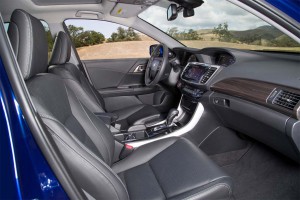
Auto suppliers are looking to take the cast off pieces of other companies and turn them in to profits.
The next round of auto supplier roulette appears to be ready for a new set of players. The last round occurred in the 1990s as suppliers looked to acquire complementary parts to build modules or gain size to get economies of scale.
However, while the ferocity of the frenzy may feel the same as last time, the end goal is a little different. In the past suppliers were looking to be the sole source for modules, but this time around there seems to be a focus on shedding what each company deems to be unprofitable businesses.
One area that seems to be seeing a shift is automotive interiors. Newer suppliers seem to be ready to make a go of a business that more established players are ready to escape.
“It’s an extremely profit-poor segment,” Dietmar Ostermann, a PricewaterhouseCoopers senior strategy consultant in Detroit, told Automotive News. “Certainly, the megasuppliers are asking themselves: “Why should I do this if I can double my profit margins in another segment?'”
Ostermann notes that new players in the game, such as Grupo Antolin of Spain and Yanfeng Automotive Trim Systems Co. of China are displacing the long-time players, including Johnson Controls Inc., Magna International Inc. and Visteon Corp. that have gotten out of the segment.
(BMW launches “home energy storage solution.” For more, Click Here.)
Like the many of the suppliers of “yesteryear,” Yanfeng and Grupo Antolin expect economies of scale to help them make money in a tough segment, Automotive News noted.
In 2015, Yanfeng took a 70% stake of Johnson Controls’ interiors unit while Grupo Antolin spent $525 million to acquire Magna International’s interiors division last August. It was part of a banner year for mergers and acquisitions that saw more than $40 billion deals happen, breaking the previous record of $35 billion in 2007.
That push was marked by largely by one really big deal: ZF Friedrichshafen’s $12.4 billion acquisition of TRW Automotive Holdings Corp. But there were still are larger number of deals – 20 – than in previous years and there is no reason to think that trend will abate much this year, Ostermann believes.
(Click Here for details about FCA eliminating use of recall-targeted Takata airbags.)
There are three trends driving the current set of moves, he said:
- Automakers are increasingly using a handful of platforms to underpin model lineups around the world. That trend favors big suppliers.
- To keep up with advances in self-driving cars, infotainment and powertrains, suppliers must support big R&D budgets. That is a challenge for modestly sized companies.
- Private equity investors are betting on the auto industry’s long-term growth, so financing is available to dealmakers.
“If you are a smaller supplier, you can’t survive anymore,” Ostermann told Automotive News. A small supplier “can’t support global programs on five continents, so we are going through a consolidation that is pretty significant.”
Ostermann expects 2016 will be another robust year for deals. One type of deal to look for is a supplier looking for a lifeline, specifically Takata. The Japanese supplier has been rocked by the largest recall ever, but it also counts some of the biggest automakers in the world among its customers.
Recent reports have private equity funds as well as other suppliers considering a move, the most prominent among them being KKR taking a 60% stake in the troubled supplier. Additionally, plastics and other components suppliers are also areas of the supplier base that are likely to see more consolidation.
(Death of Star Trek actor highlights concerns about new generation of electronic shifters. Click Here for more.)
Finally, with approximately 100 OEMs, it’s expected to see sizeable consolidation of Chinese automakers in the near future and along with it, a similar contraction of suppliers, especially in light of contracting auto sales in the country.

Who is editing this text? Please, please use proper sentence structure so that your story flows. This is the second article I opened up this morning and had trouble reading because the story was so poorly written and edited. Some of us had to learn English as a second language, and so we know what’s properly written and what’s not.